The stress response is a tightly maintained and complex interplay between the neuroendocrine and autonomic nervous system, with the purpose of providing the energy needed to respond to a threat and then return to homeostasis once the threat has passed. Individual variances in the stress response are influenced not only by early life events, genetics, and age, but also by gender.
The onset of puberty marks the nascence of sex differences in stress reactivity. During this time the rate of mood and stress-related complaints in girls is 2-3 times the rate seen in boys, a phenomenon that persists and intensifies into adulthood.1 The differences in HPA axis response between men and women are principally steered by gonadal hormones and their phasic fluctuations. To follow is a look at the neuroendocrine changes across the lifespan that render women more vulnerable to HPA axis dysregulation and the herbs and nutrients that may offer support.
The Reproductive Years
The ovarian hormones estradiol and progesterone are thought to regulate the impact of stress on mood disruption.1 During the reproductive years, gender differences in HPA axis reactivity are influenced by the women’s menstrual cycle phase and related hormone levels. While men generally have greater HPA axis responses from adolescence through adulthood, a greater salivary cortisol response to stress has been observed in women in the follicular phase, a phase typically marked by low estradiol.2 At the end of the follicular phase and into the luteal phase where estradiol and progesterone levels are highest, women subjected to stress during this time reveal lower cortisol levels.1,3. Interestingly, the regions of the brain responsible for mood regulation do not only contain copious amounts of cortisol receptors, they also comprise the largest concentration of estrogen receptors.
It is important to note that oral contraceptive use can disrupt this balance and the HPA axis response. While oral contraceptive users largely exhibit high cortisol levels, in laboratory-induced stress studies they’ve demonstrated a blunted HPA axis response, with subjective anxiety but no accompanying cortisol response.4 Long-term hypo-responsiveness of the HPA axis can leave women susceptible to a maladaptive stress response and mood regulation concerns later on.
The hormonal changes during pregnancy have also been shown to cause dysregulation of the HPA axis, the degree of which can be a considerable factor in mood outcomes postpartum.5
The Menopause Transition
As women approach menopause, a reorganization of FSH and LH hormone levels and HPA axis reactivity occurs. The timing and duration of the menstrual cycle begins to fluctuate accompanied by an erratic, but overall decrease in the production of estradiol and progesterone. Estradiol modulates cytokine release, is neuroprotective, tempers limbic activities and influences negative feedback on the HPA axis. Progesterone derived neurosteroids act upon the GABAergic system, which is also responsible for regulating HPA activation and negative feedback. The deficit of these hormones along with the reduced sensitivity of the hypothalamus and pituitary glands to cortisol and ACTH, cause increased cortisol levels and increased sympathoadrenal responsiveness in peri and postmenopausal women.2 Collectively, these events can manifest as difficulty sleeping, irritability, anxiety, negative mood, and other concerns.
Supplemental Considerations
Chronic stress can lead to inadequate adaptation of the HPA axis. While men’s stress response needs may be more general in nature, there are a few targeted supplements that can promote a healthy stress response in women throughout their various life stages. They include:
Ashwagandha (Withaniasomnifera) has been shown in clinical studies to reduce stress and occasional anxiety in adults.*6,7 A literature review demonstrated that ashwagandha exerts “positive influence on the endocrine, cardiopulmonary, and central nervous systems.”*8 Ashwagandha may be helpful in modulating the mood and hormonal responses in women in times of stress.*
Vitamin B6 (pyridoxine) is a cofactor for approximately fifty different enzymes and plays a role in the production of neurotransmitters, such as serotonin, dopamine, epinephrine, norepinephrine, and gamma-aminobutyric acid (GABA).*9,10 Vitamin B6 may also be helpful for premenstrual mood support.*
Melatonin is synthesized from tryptophan and secreted by the pineal gland during periods of darkness.11 Human research has found that supplemental melatonin promotes sleep, improves sleep quality, and shortens sleep onset latency, particularly in people age 55 and older.*12,13,14,15 Women experiencing occasional sleeplessness due to an overactive HPA response may benefit from melatonin.*
L-Theanine has been shown to increase serotonin and dopamine levels in humans, which may promote muscle relaxation and improved sleep.*16 L-Theanine is a non-drowsy, non-habit forming option for women who need restful sleep to support healthy daily cortisol rhythms.*
A major determinant of a woman’s wellness and vitality is the capacity to maintain a healthy response to stress across life’s many stages. Ascertaining what this means for a patient involves not just clinically assessing their hormonal influences but also unfolding the story told by their genetics, environment and life experiences.
REFERENCES
- Albert K et al. Psychoneuroendocrinology. September 2015. 59:14-24.
- Veldhuis J et al. Endocrinol Metab Clin North Am. June 2013. 42(2): 201-25.
- Maki P et al.HormBehav. August 2015. 74:201-8.
- Mordecai K et al. J Neuroscience Research. 2017. 94:126-35.
- IliadisSI et al.PLoS One. August 31, 2015. 10(8):e0135471.
- Chandrasekhar K et al. Indian J Psychological Med. 2012;34(3):255–62.
- Andrade C et al. Indian J Psychiatry. 2000 Jul;42(3):295–301.
- Mishra LC et al. Altern Med Rev. 2000;5(4):334–46.
- Oka T et al.Nutr Res Rev. 2001 Dec;14(2):257–66.
- Gaby AR et al. Nutritional Medicine. Concord, Fritz, Perlberg Publishing, 2011:80–87.
- Mishima K et al. Nihon Rinsho. 2012;70(7):1139–44.
- Mundey K et al. Sleep. 2005;28(10):1271–8.
- Zhdanova IV et al. Clin Endocrinol Metab. 2001;86(10):4727–30.
- Hairmov Iet al. Sleep. 1995;18(7):598–603.
- Lemoine P et al. J Sleep Res. 2007;16(4):372–80.
- Juneja L et al. Trends in Food Sci Tech. 1999;10:199–204.

